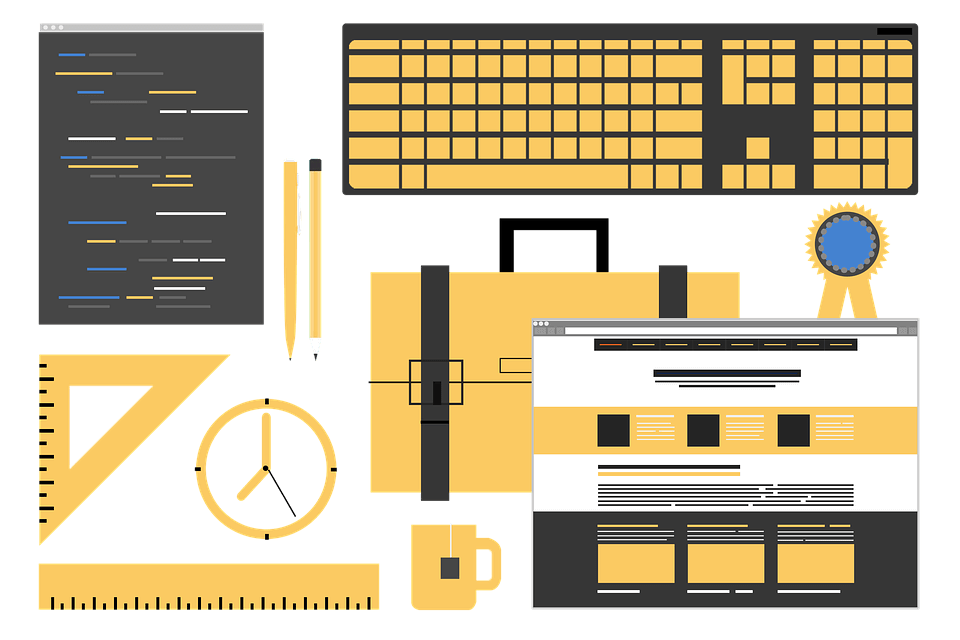When developing a web page, it is not about empirically designing or making decisions as you go along and crossing your fingers to make it to the liking of your customers.
There are errors when creating a web page that, no matter how small they may seem, can cause your visitors to leave and that your site never obtains a good position in Google or report profits.
If you want to take advantage of the full potential of a good site, you should try not to fall into the following web design mistakes:
Also Read: 4 Best Ways to Increase the Loading Speed of Your Website
Page Contents
Checkout Mistakes to Avoid When Creating Your Website
1. Not planning
Do not limit yourself to the classic page that is nothing more than a great business card with information about your company, history, services, and way of locating you. Is it really what your audience wants to know about you? What relevant information could you offer them and how?
- Analyze your target audience: who they are, what they are like, what they like, and what they need.
- Analyze your company: what you have to offer and how you are going to present the information, that is, make a structure of the page.
- What are your goals?
2. A complicated or unattractive domain
One of the most common website building mistakes is choosing the wrong domain name. Either very long or difficult to pronounce. Choose a name that:
- Go according to your company and its services.
- Keep it short and pronounced exactly as it is written.
- Make it original.
3. Slow downloading Speed
Few people are willing to wait for a page to download for more than 5 seconds. It is important to choose a good hosting service carefully and ensure that elements such as photos, videos, or plugins do not affect download time.
4. A chaotic home page
Another one of the web design mistakes that causes a high bounce rate is having a cluttered home page. Messy images, too much text, various menus, colors, links, textured background, etc., make reading difficult. Go for a simple, balanced, and pleasant design.
5. Not using responsive website
The Zenith agency estimates that by 2021 73% of the time that people spend connected to the Internet will be through smartphones and tablets.
It would be a serious mistake not to create a responsive website, that is, one that adapts to the format of any device from which it is accessed and that it is displayed correctly.
6. Poor quality images
Never use poor quality images or large-small photos. If you want to show your facilities or products it is better to invest in a professional photographer so that you get excellent shots. On the other hand, the use of video is of great help to captivate the attention of your visitors.
7. Not including contact forms
If you are looking for new clients it is essential to have a contact page. Do not limit yourself to a form, you can consider having an online chat for customer service and speed up the response time.
8. Using heavy plugins
Plugins are very useful for some functions of your page but you should not use heavy plugins, as they will make your site very heavy and will affect its performance. Make a selection and only use the ones that work best for you.
9. Not paying attention to SEO
Neglecting the SEO of your page will not allow it to obtain a good position in the search engines and your potential clients will not be able to find you. Good SEO should focus on quality content, update it regularly, get good external links, and pay attention to keywords.
10. No calls to action
A website is an excellent hook for getting prospects that you can “educate” about your business through digital marketing techniques and email campaigns. For this, you must make calls to action to motivate them to provide you with their data.
11. Difficult navigation
A website must be intuitive, simple, and with well-structured menus. All focused on a good user experience.
12. Not using breadcrumbs
The breadcrumbs greatly facilitate navigation users. They are those words that are lined up at the top of a page tracing the path of exploration.
Home> Women’s clothing> Shoes> Boots> Boots model 00232
13. Not placing a search bar
If a user on your page does not find what they are looking for, they will leave. The best way to help you find what you want is by placing a search bar.
14. Broken pages
Isn’t it annoying to be browsing a site and finding a page with a 404 error? Make sure all your links work.
15. Duplicate content
Google doesn’t like bad practices. Copying the content of another site, in addition to being unprofessional, will affect your positioning in the search engine.

